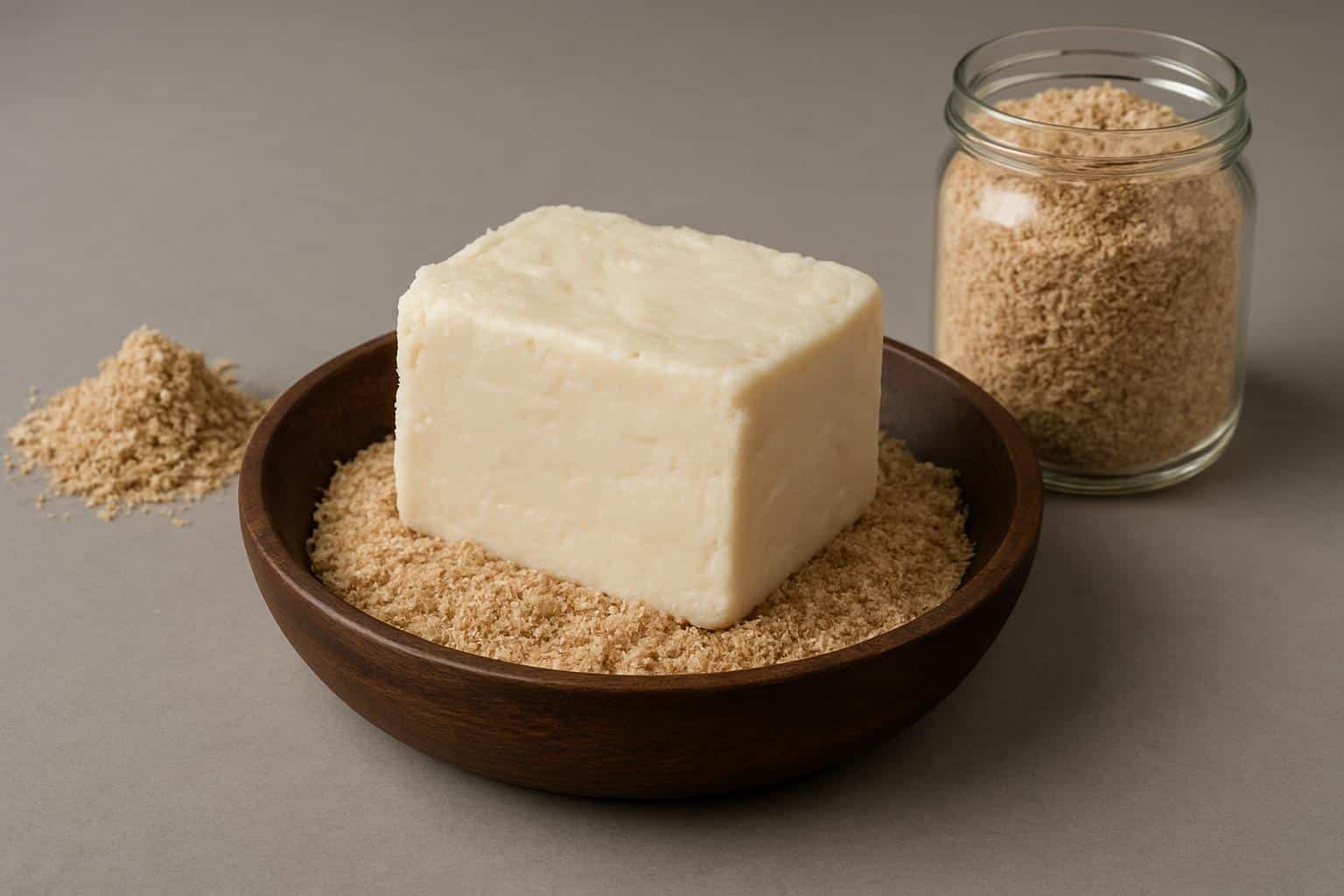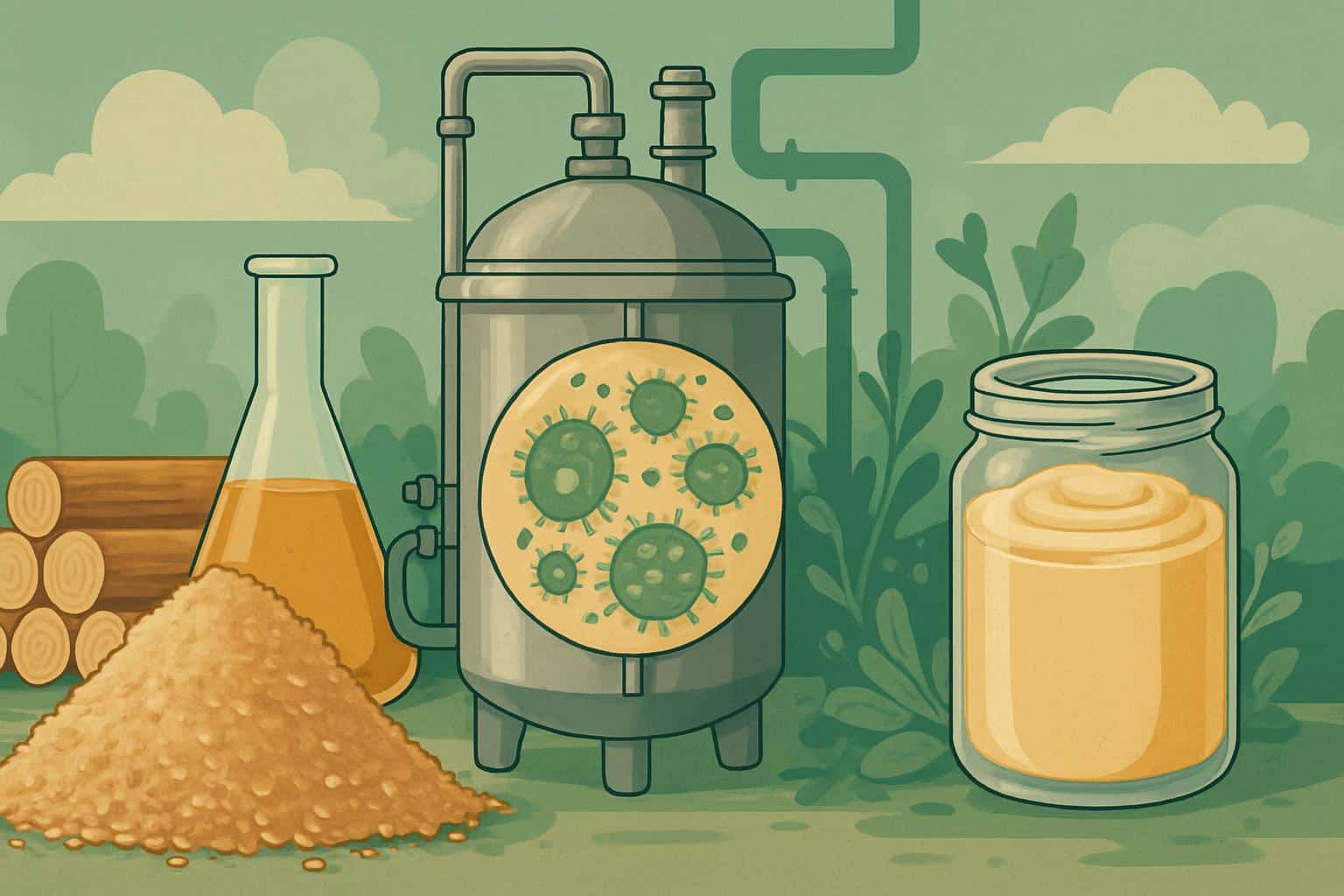ÄIO, an Estonia-based biotech startup, claims to have found a way to do this with agricultural and forestry waste, turning sawdust and straw into edible fats by using precision fermentation. If it scales as hoped, the process could tap a fresh supply of functional fats for food and cosmetics without turning to palm plantations or animal farming.
How edible fat is made from sawdust using fermentation
The company uses oleaginous microbes (organisms that naturally produce oil within a cell) to consume sugars from lignocellulosic residues. Those shavings and other waste contain cellulose and hemicellulose: the complex fibers that, after pretreatment and enzymatic hydrolysis, can be fermented into sugar. Inside bioreactors, ÄIO’s engineered organism uses that sugar to create lipids, and then the fats are separated out and refined into a solid fat or oil.

The platform was developed by co-founders Arvi Lahtvee and Rosangela Bonturi, following long academic careers at Tallinn University of Technology. The team’s twist is feedstock flexibility — being able to process low-value residues rather than food-grade sugars — and a fat profile they say can be manipulated for mouthfeel, melt point, and oxidative stability. The founders say one setup closely replicates the mouthfeel of chicken fat and another produces neutral-tasting oils for baking and confectionery.
Why alternative fats matter for food and sustainability
Today, about 40% of the world’s vegetable oil comes from palm trees, with total annual production ranging between 77 and 80 million metric tons, according to the U.S. Department of Agriculture. Its usefulness and low cost made it so broadly available, but its expansion has been tied to species habitat loss in Southeast Asia. Recent history has witnessed significant forest loss related to palm cultivation, according to reports from Global Forest Watch and the World Wildlife Fund, even as some producer countries have started to bend the curve on destruction of their forests.
Substituting even a small amount of palm-based ingredients with fermentation-based lipids could alleviate land pressure and supply risk. According to academic research, oleaginous yeasts have the capacity to accumulate more than 60% of their dry cell weight as oil, which means that it can be produced and stored in a relatively small footprint (stainless-steel tanks). And because microbes grow year-round, production is not tied to the weather or harvest cycles — a selling point for consumer brands that want more resilient sourcing.
From lab bench breakthroughs to early commercial demand
ÄIO spun out from the lab in 2022, and has raised around $7 million to date, running pilot-scale facilities and signing up more than 100 potential partners across food and personal care, according to the company. It was also awarded the 2024 Baltic Sustainability Award for its waste-to-value strategy. Early trials indicate that the fat could be used in plant-based meat as marbling, and in laminated doughs for flake and lift, and creams or balms where stability and glide are important.
The startup’s founding precept — upcycling waste that would otherwise be burned, composted, or underutilized — goes along with circular economy objectives embraced by the European Commission and the Ellen MacArthur Foundation. The Food and Agriculture Organization reports that billions of tons of agricultural residues are produced annually around the world, an ample pool of substrate when it can be effectively transformed.

Regulation And Scale Are The Next Hurdles
Edible approval, like all novel ingredients, is a gatekeeper. ÄIO intends to seek clearances in food regulatory jurisdictions active at an early stage for new food technologies, such as with Singapore’s newly created novel foods framework, then with processes alongside the European Food Safety Authority and the U.S. GRAS pathway. Safety packages are generally based on toxicology, allergenicity, and compositional equivalence data according to OECD and Codex rules.
On the manufacturing side of the business, ÄIO plans to construct a commercial-scale facility by 2027 and license its process to existing producers. That dual model is the beer recipe for fermentation peers that work with co-manufacturers, and it’s proven faster time-to-market. Early life-cycle analyses of the microbial oils tend toward less land-intensive and possibly lower GHG emitting than their palm-based equivalents, but solid third-party certification will be required at scale.
A crowded, yet complementary, space for alternative fats
ÄIO is part of a wave of hopefuls trying to elbow in on replacements for palm oil and animal fats. C16 Biosciences and Clean Food Group are bringing to market yeast-based oils; NoPalm Ingredients is working with microbial lipids for bakery and confectionery; while outfits such as Hoxton Farms are incubating fat cells directly. Every course has its respective costs, regulatory implications, and mileage. If ÄIO’s waste-fed system proves capable of running at industrial scale, that feedstock advantage might be a relevant differentiator.
The broader goal is portfolio diversification. Food processors seldom use a single fat; they intermix to control crystallization, melting profiles, and flavor release. A tunable fermentation-made fat starting from sawdust isn’t necessarily going to straight-up replace palm oil, but it might be able to assume targeted use cases where claims around sustainability and performance warrant the transition.
For now, the company is scrambling to demonstrate consistency, cost, and compliance. If all goes as planned, turning forest industry byproducts into high-value edible fat could go from a lab experiment on the Baltic Sea to a mainstream ingredient line-up, giving brands a new way to trim their environmental impact without sacrificing function.

